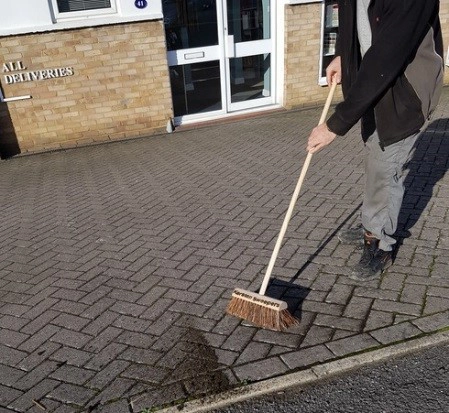Weed Management
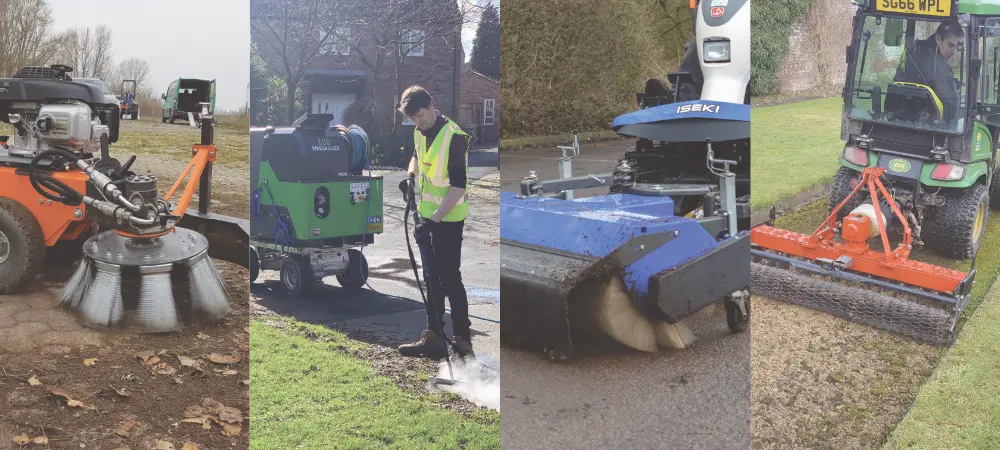
Weed Management
Weed management is a comprehensive process aimed at controlling and reducing unwanted plant growth, primarily weeds, on various surfaces like roads, pavements, and green spaces. This approach focuses on Integrated Weed Management (IWM), which combines various strategies to effectively tackle weed growth without excessive reliance on chemical herbicides.
Key Elements of Weed Management
Prevention by Design and Maintenance: This involves designing spaces to minimize the opportunities for weeds to grow by reducing detritus and organic material accumulation on hard surfaces. For example, using kerbs and infrastructure that make sweeping and cleaning more efficient, as well as employing low-maintenance ground cover plants to suppress weed growth.
Mechanical Control: Using specialized equipment like weed brushes, sweepers, and vacuum collectors to physically remove soil and detritus that can harbor weed seeds. This is essential for preventing weeds from taking root and flourishing. Removing soil from hard surfaces also reduces moisture retention, which is beneficial in controlling moss growth. Learn more about mechanical weed management.
Thermal Weed Control: This method involves using heat treatments, such as hot water, hot air, or foam, to kill weeds by disrupting their cellular structure. It's particularly effective on young weeds and helps reduce regrowth. Learn more about thermal weed management.
Year-Round Management: Different seasons require specific actions. In winter, removing organic debris is crucial to preventing future weed growth. In spring, thermal treatments can kill emerging weeds, while summer focuses on managing grass cuttings and leaf debris. Autumn emphasizes the removal of leaves and organic matter before they decompose into soil.
By integrating these methods—mechanical, thermal, and preventative measures—Kersten UK's integrated weed management strategy offers a sustainable solution to weed control that minimizes the environmental impact of chemical herbicides.
Weed Management for Hard Surfaces
Are weeds affecting the visual appeal of your property? The proliferation of weed overgrowth introduces various concerns, including an unsightly appearance on hard surfaces, creating an unkempt atmosphere.
Weeds exploit cracks and joints, causing potential damage and costly repairs, particularly on paved areas. Additionally, weed presence can lead to slippery surfaces, posing safety risks, especially in wet conditions.
Managing these challenges demands continuous maintenance, with regular removal and treatment essential to prevent unchecked growth. Fortunately, Kersten UK provides professional-grade solutions such as:
1. Mechanical weed management
2. Thermal weed management
3. Weed prevention
Explore our range for enhanced property aesthetics and safety.
Articles about Integrated Weed Management
No, the plant leaf only requires a temperature of less than 80 degrees Celcius to burst the cells in the leaf which leads to the demise of the plant.
No, the Ripagreen thermal lance must be squeezed to operate it. The gas and ignition stops immediately when the lance handle is released.
The Ripagreen Thermal weed control lance remains cool during use. This is because large volumes of air are being forced through the handle, tube and nozzle before being ignited only at the very end of the lance. The head can even be adjusted immediately after use, as long as the head has been kept the correct distance from the ground. If it has been held too close to the ground, the head can potentially get hot from reflected heat.
Rough gas usage on young annual weeds is 1x 5kg bottle per 1000m² (weeds up to 100mm high)
Rough gas usage on established annual weeds is 1x 5kg bottle per 500m² (weeds up to 200mm high)
Rough gas usage on established perennial weeds is 1 x 5kg bottle per 250m² (Weeds up to 200mm high)
It is difficult to establish the gas usage for weeds outside this specification.
Consider using mechanical methods instead.
Consioder removing the cause of the plants access to soil on hard surfaces.
Use biological controls on organic surfaces such as mulching, dense planting of a desirable species, change treatment timings to fall within the above specification.
Cost of 5kg refill GASLITE cylinder from FLOGAS is about £35.00
In comparison The Easy+ kit uses a 10 - 12kg cylinder on the trolley and the lance as above. A refill for this is considerably cheaper at about £42 which roughly halves to cost of the gas.
Notes. Prior to heat weed control solutions it is recommended all sites are cleared of detritus.
The obvious risk to damage to property is fire. As the required heat to kill a plant is only around 75-85 degrees there is no requirement to concentrate heat on any surface long enough to cause ignition. It is good weed prevention practice to remove all detritus from hard surfaces. This is especially important to reduce any risk of fire. A risk assessment should be conducted on all areas and all risks minimised or mitigated. These product have been used, without incident on many types of ancient and modern surfaces.
The Health and Safety Executive (HSE) provide information on their website regarding various aspects of storage, transporting, use and disposal of LPG cylinders. The suppliers of the gas such as Calor and Flogas also provide information. Training should be provded to the opperator on installation of the equipment by either Kersten (UK) Ltd or your supplying dealer. HSE state the following : LPG cylinders Cylinders should be stored preferably in the open air on a concrete or load-bearing surface. Flammable liquids, combustible, corrosive, oxidising materials, toxic materials or compressed gas cylinders should be kept separate from LPG containers in general. Containers should be stored with their valves uppermost. The maximum size of any stack should not exceed 30,000 kg. For storage indoors, no more than 5000 kg may be stored in each purpose designed building compartment and a maximum of five compartments may exist in a single building.
Liqid Gas UK website provides a useful PDF information sheet regarding the use of LPG in cylinders.
Manufacturers specification states the the Ripagreen machine operates at levels of less than 85db. This is an industry standard figure above which ear protection is required. In our experiance however, the Ripagreen lance operates at a level around 60-70db or equivilent to a conversation. Our tests have shown that the operation of the machine in public areas does not appear to cause any concern or behavioral change in peoples attitude.
No, you do not need a licence to use a Ripagreen Thermal Lance to kill weeds.
The gas bottles for the Ripagreen system are commonly available from local gas stokists of Calor or flogas. The gas used is Propane gas commonly used for BBQ's and other heating. We like these new Gaslight cylider from Flogas becase they are much lighter to carry than their steel equivilent.
The Ripagreen uses hot air to kill plants. This method is suitable to use in a much wider variety of weather than many other systems.
The hot air is not affected by drift in the same way chemicals are, so the Ripagreen can be used in moderately windy conditions, provided the flame can be safely controlled.
The Ripagreen is just as effective at killing the plant in the rain, as moisture is a good conductor of heat. The ripagreen operates at temperatures of between 400 - 600 degrees celsius, so it is not largely affected by cold or wet weather.
This makes is a reliable tool for year - round use.
Care should be taken on very hot and dry days, as the heat can cause very dry maerial to catch fire. It is good practice to carry a fire extinguisher when using the Ripagreen and other flame or heat based weed control products.
There are two typical sizes of gas bottle for the Ripagreen. The easy kit uses a 13kg bottle and the mobility kit uses a 5.5kg bottle of gas. You can get these bottles from your local calor or flogas stockists.
The ripagreen uses a regulator to adjust gas consumption. On a low setting the gas is used at approximately 2.9 KG per hour. So this will last about 2 hours of trigger time in the smaller bottle and 4 - 5 hours using the larger bottle.
The machine only uses gas when the trigger is pulled, which means that gas is not consumed when it is not pointed at a weed. In typical conditions this means that a bottle will realistically last much longer than the times stated above.
The Ripagreen uses hot air to kill weeds. When a plant is exposed to temperatures of more than about 76 degrees, the chloroplasts (the cells in the leaf that carry out photosynthesis) will burst or congeal. By destroying these cells, the plant is unable to convert light into energy. It therefore starves the plant, which dies within 72 hours. You will usually start to see the effects of the heat treatment within a few minutes.
Hot air is a very effective tool for treating many weeds in a golf course scenario. A big problem we are often asked to eliminate is the use of chemicals in bunkers, due to the walking of chemicals over the nearby grass and other situations where drift is an issue.
With thermal methods, you can be much more targeted and leave no residues, therefore they are very suitable for applications on a golf course. Many courses have purchased our Ripagreen kits to solve this specific problem.
Hot water will penetrate the soil, which acts as a great insulator - keeping the water good and hot. This allows the water to heat the roots of the plants effectively cooking them. Hot air will not penetrate the soil, so has less effect on root systems.
However, this does not mean that hot air is ineffective. It works very well on annuals and mosses. We encourage people to remove the soil on hard surfaces, which will typically change the types of weeds which emerge. This will mean you are dealing with fewer perennials and woody plants and more often encountering just annuals and mosses, which hot air is very effective at killing.
You can also aid the efficacy of thermal treatments by carrying them out as early in the plant life cycle as possible. They can also be used as a preventative tool, by sterilising the seeds near the surface of the soil.
In noise-sensitive areas, thermal weed machines, especially hot water machines such as Eco Weedkiller which are nearly silent in operation. Using those devices could minimise disturbance while maintaining a weed-free environment in those areas. The Eco Weedkiller SP Series uses electricity to heat the water, which means there is no engine running when the machine is in use.
We also offer battery powered two wheel tractors, which greatly reduce the noise associated with weed brushing and sweeping. Electrifying your fleet can come with many other benefits too, such as reduced hand arm vibrations and cheaper running costs.
The Eco Weedkiller Products use hot water to kill weeds. When a plant is exposed to temperatures of more than about 76 degrees, the chloroplasts (the cells in the leaf that carry out photosynthesis) will burst or congeal. By destroying these cells, the plant is unable to convert light into energy. It therefore starves the plant, which dies within 72 hours. You will usually start to see the effects of the heat treatment within a few minutes.
Eco Weedkiller offers new technology for weed control based on hot water. The water is heated via electricity and then kept warm in an insulated tank. The device will keep its warmth (more than 100 degrees Celsius) for at least eight hours after disconnecting the power. The device does not need to be connected to the electricity network or water supply during use. You can go wherever you wish.
The short answer is yes. But this is subjective. The Eco Weedkiller system is extremely efficient compared to other heat systems on the market which use a diesel generator to keep the water at the correct temperature.
The machine uses electricity to heat the water to the desired temperature and then keeps it hot using a specially insulated tank and keeping the water under pressure. This means there is no need to burn fuel all day to keep the water hot.
The electricity used to do the heating could be supplied from any source, including solar energy for example; which makes it possible for the product to be extremely environmentally friendly.
The output of the Eco Weedkiller is simply boiling water, which is very clean and safe fro the environment, and makes it safe to use in many areas where herbicides such as glyphosate are unsuitable or simply undesirable.
Further to this you can make this solution more environmentally friendly by following a Weed Prevention Strategy.
Eco Weedkiller uses hot water to kill plants. This method is suitable to use in a much wider variety of weather than many other systems.
The hot water is not affected by drift in the same way chemicals are, so the Eco Weedkiller can be used in moderately windy conditions, provided the water can be safely controlled.
The hot water is still effective at killing the plant in the rain however, it does rely on the hot water, so more water might be required in very cold weather.
This makes it a reliable tool for year - round use. Hot water can be used safely in most weathers.
The product uses water, which is delivered at over 100 degrees. Therefore, there is a risk of some types of material such as thin plastics etc deforming and a risk of scalding if the water comes into contact with someone's skin. A risk assessment should be conducted on all areas and all risks minimised or mitigated. These product have been used, without incident on many types of ancient and modern surfaces.
No, you do not need a licence to use hot water to kill weeds.
The Eco Weedkiller products are virtually silent in operation. There is no engine, so all you hear is the water funning onto the surface and a small hiss, indicating it is at the correct temperature (over 100 degrees Celsius).
There are versions with a 300 litre and 600 litre storage tanks as well as a small Garden version with a 25 litre water tank. Using water allows great penetration into the soil, allowing successful treatment of perennial plants with more established root systems in many situations. The rule of thumb is that 2–2.5 litres of hot water is needed per square metre in areas with 100% greenery coverage. This means that 300 litres of water is enough for 100–150 green square metres.
Notes. Prior to heat weed control solutions it is recommended all sites are cleared of detritus.
The trigger must be pulled in order to deliver the hot water. So the machine cannot use hot water accidentally. However, there is a filling mode, a heating mode and a working mode, which must be correctly selected so that the correct task can be carried out by the machine.
When deciding between a sweeper and a weed brush for asphalt and tarmac maintenance, consider the specific issues you're facing:
- Sweeper: Ideal for removing loose debris, leaves, and dirt that accumulate on the surface and in gullies. A powered sweeper with a collector box is effective in preventing detritus buildup, which can obstruct drainage and lead to moss and weed growth. It is also useful for cleaning edges and keeping pavements clear. Our pedestrian sweepers also come with a de-moss brush, which helps remove moss and algae that may have started to grow on the surface.
- Weed Brush: Best for tackling established weeds and moss that have penetrated the surface. A weed brush can effectively remove these invasive plants, which can cause surface cracks and deterioration over time. It’s particularly useful in areas where weeds have started to penetrate the tarmac, causing damage.
Recommendation: For comprehensive maintenance, use a combination of both tools. Start with a weed brush to address any existing moss and weeds, then follow up with a sweeper to clear the surface and prevent further issues. This dual approach ensures both removal of vegetation and effective debris management, maintaining the integrity and appearance of your asphalt or tarmac surfaces.
Yes, the Gully Brush is compatible with most sweepers, enhancing their ability to achieve clean, crisp edges along paths. This brush not only maintains a visually appealing site but also excels in reaching the corners of kerbs to remove debris. Effective debris management is crucial for preventing weed growth, making the gully brush an essential tool for maintaining a well-kept, weed-free area.
Explore our range of sweepers to find the compatible gully brush for your needs.
Regularly removing soil and heavy debris is essential for effective grounds maintenance to ensure the longevity and safety of hard surfaces such as asphalt, tarmac, and block paving. Accumulated soil and debris can lead to several issues:
- Surface Degradation: Soil and debris, when left unmanaged, can contribute to surface damage. Organic material decomposes and forms a layer of detritus that can compromise the structural integrity of pavements and roads.
- Weed and Moss Growth: Moisture trapped by debris promotes the growth of weeds and moss. This not only deteriorates the surface but also creates hazards for pedestrians and vehicles. Regular removal prevents these issues from taking hold.
- Drainage Problems: Debris accumulation around drainage edges and kerb lines can block water flow, leading to flooding and further surface damage. Maintaining clear drainage areas is critical for preventing water-related problems.
- Enhanced Safety: Removing debris prevents slippery conditions, reducing the risk of accidents. It ensures that walkways and roadways remain safe for users, especially in high-traffic or frequently used areas.
- Cost Efficiency: Regular maintenance reduces the need for costly repairs by addressing issues before they escalate. It helps keep the surface in good condition, minimizing long-term expenses associated with extensive repairs or replacements.
For effective soil and debris management, tools like sweepers and weed brushes are invaluable. They help efficiently clear and maintain hard surfaces, ensuring a clean, safe, and durable environment.
A weed brush is crucial for effective soil and heavy debris management, particularly in areas where compacted debris and stubborn weeds accumulate. It excels at clearing paths and kerb edges, handling heavy-duty, compacted surfaces with ease. The brush's design allows it to target and remove debris in tight spots, such as along kerb lines and around drainage edges. By using a weed brush, you can ensure thorough cleaning and maintenance, preventing the buildup of soil and debris that could otherwise lead to surface damage and promote weed growth.
Weeds thrive on tarmac and asphalt surfaces when detritus, such as leaves and twigs, accumulates in gullies and along pavement edges. This buildup creates a medium for weeds to grow. Once weeds establish themselves in the debris, their roots can penetrate the surface, leading to cracks and further surface damage. Over time, the cracks widen, causing the surface to crumble and form potholes. Regular use of a gully brush and powered sweeper with a collector box is essential for clearing debris from edges and gullies, preventing detritus from rotting and providing a breeding ground for weeds. This helps maintain the integrity of the surface and prevents costly damage.
To prevent moss and algae growth, ensure regular sweeping to remove organic debris and detritus. Prune nearby trees and hedges to reduce leaf and twig accumulation. Maintain proper drainage by addressing any issues with sand displacement or compaction.
The frequency of using Kersten weed brushes varies based on the level of moss and weed growth. For high-traffic areas or surfaces with significant moss problems, regular use is essential to prevent buildup and maintain a clean surface. To avoid detritus accumulation and potential rot, it's crucial to implement preventative measures. Utilizing a powered sweeper and collector can effectively remove debris and support ongoing maintenance, ensuring optimal performance and longevity of your block paving.
Kersten weed brushes and powered sweepers are essential tools for maintaining block paving surfaces. The Kersten weed brush effectively agitates and lifts moss from between the blocks, preventing moisture retention and surface damage. Complemented by the Kersten sweeper, which efficiently collects debris and redistributes sand into gaps, this combination ensures optimal drainage and surface stability. Together, these tools help maintain the appearance, durability, and safety of your block paving, extending its lifespan and reducing the risk of moss-related issues.
For kerb edges that are heavily compacted with weeds and debris, a weed brush is your best tool. Its strong bristles can effectively break through dense and stubborn material, making it ideal for removing compacted detritus and weeds from tight spots. The weed brush excels in heavy-duty conditions where traditional sweepers might be less effective. Use it to slide out debris from kerb edges and clear buildup, especially in areas with significant compacted soil and detritus.
For general maintenance of kerb edges, employing a sweeper with a gully brush attachment can enhance cleanliness and efficiency. The sweeper will handle loose debris, while the gully brush helps clear material trapped in the edges, ensuring crisp and well-maintained kerb lines. This combination helps create clean, defined edges and keeps your surfaces in good condition. For more details on these tools, check out our weed brush, sweeper, and gully brush product pages.
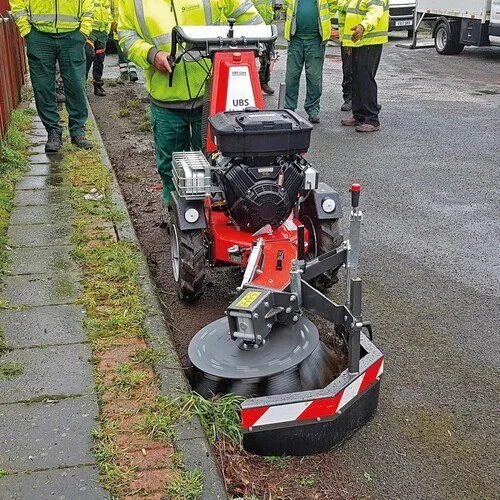
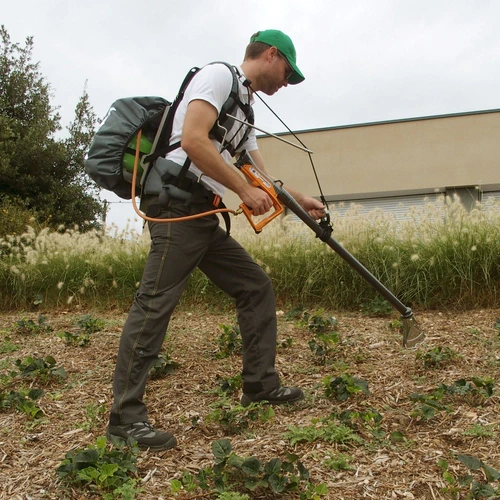
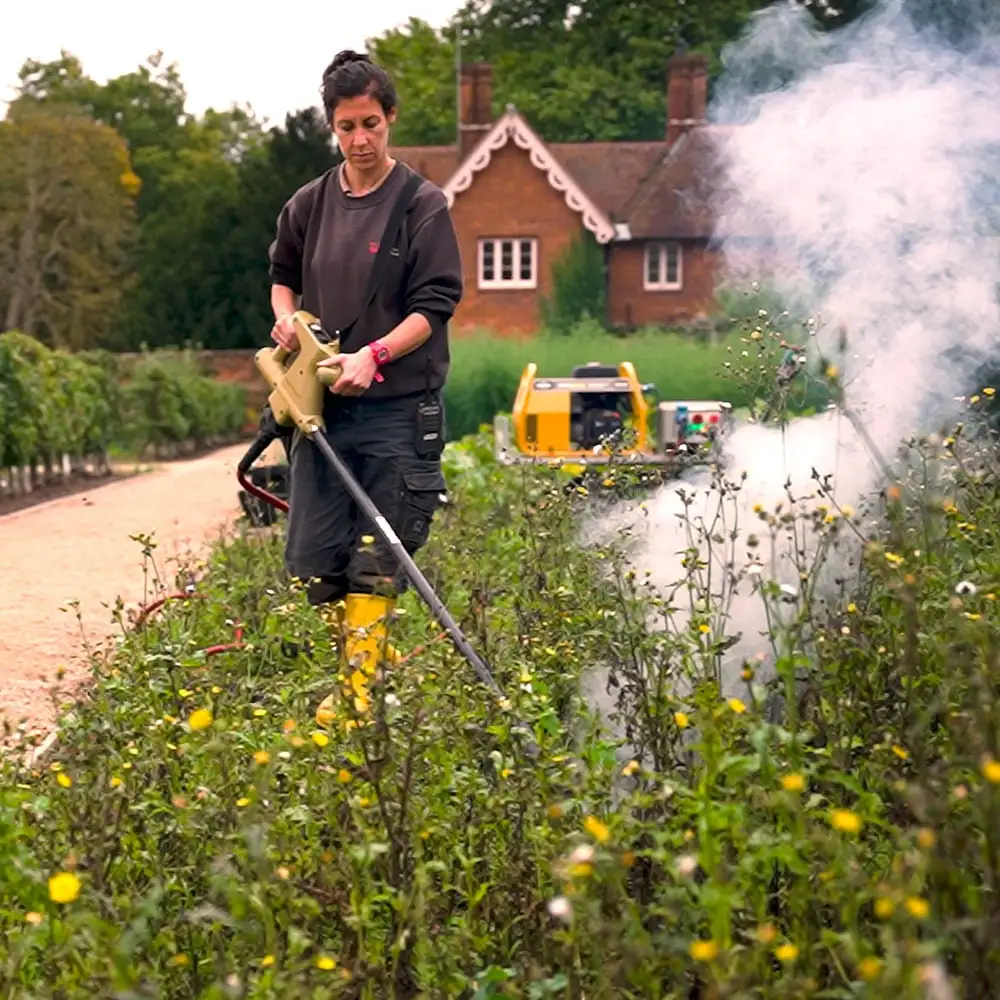
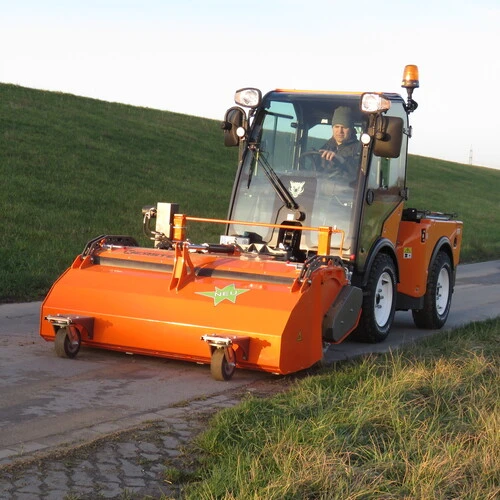

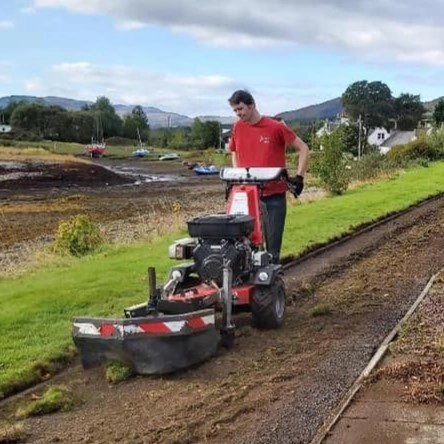

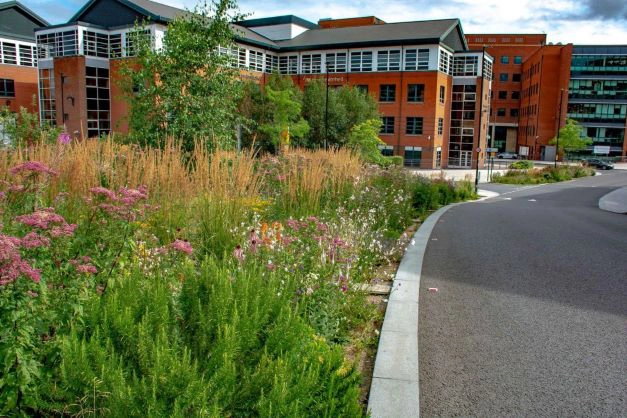
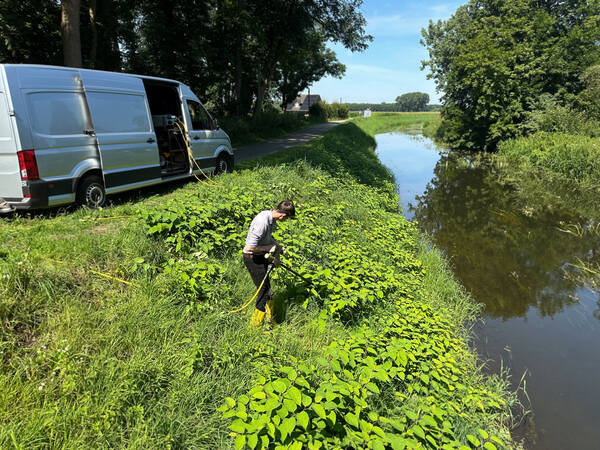
.webp)
